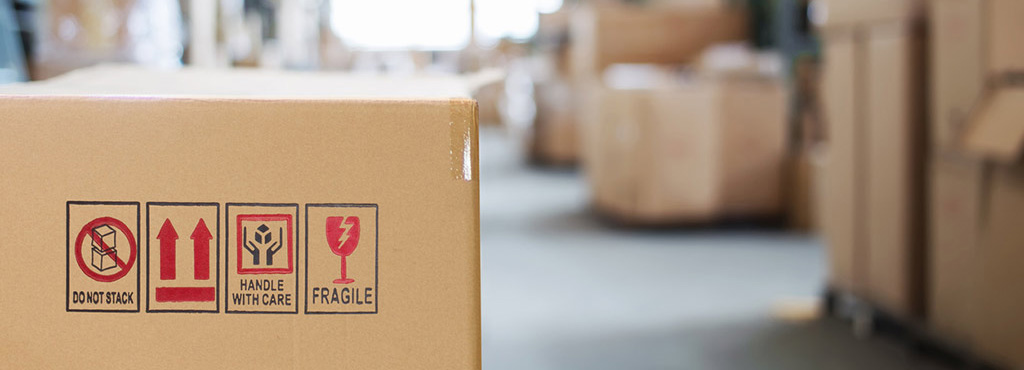9 Business Sustainability Strategies
Built For


The global population is expected to reach 8.1 billion by 2025. The earth, on the other hand, is not expected to gain any more acreage at a whopping 197 million square miles — 71% of covered by water, and the remaining 29% by land. Luckily, we’ve managed to make the most of what physical land we have, and who knows, maybe floating houses are the future….and we always have Mars as a back-up plan.
After the Industrial Revolution, business owners across the globe didn’t spend too much time stressing about their potential impact to the planet and its people, and who can blame them? The rise of industrialization was a game-changing catalyst for technology, for trade, and eventually, for convenience. But over the last few decades amidst the rise in devastating natural disasters, labor scandals, massive oil spills, and trash-islands floating across the ocean, consumers AND businesses started paying attention.
The 8.1-billion-dollar question is: how do we as consumers, as businesses, and as communities make the most of what the world has to offer without creating unsustainable living environments? How do we make products so we can make money today without jeopardizing our future growth tomorrow? What sort of sustainability strategies for business can we put in place while maintaining the integrity of our bottom line?
I would love to say, “It’s simple, really!” but alas, if mastering global sustainability was simple – well, then, there would be no need for writing this article at all.
I have passion for small business and the planet, and I’ve built a list of ten business sustainability strategies for you to consider and maybe even put into action. Why? Because change starts gradually, and even taking one step to become a more sustainable business, is still one step towards change.
**Make sure to scroll for links to several organizations helping businesses better their supply chain & business sustainability**

Business Sustainability Strategies for the Office
Go Paperless
- As a product of the internet age, I’ve witnessed the transformation of paper usage. I watched my father’s home office evolve from a room packed with filing cabinets and loose paper strewn about into simply a clutter-free, paper-free office with nothing but a desk and computer. Instead of paper billing, most businesses have moved to purely paperless, and if not, offer incentives for you as the consumer to do so. Most accounting and invoicing can be maintained online or on desktop apps.
- If your small business is dependent on paper and you are not a legal firm or medical file storage facility — it is time to declutter your office, get rid of those filing cabinets, and invest in a technological solution(s) to be your new paper.
Ditch the Plastic
- How many more half-empty water bottles do you have to begrudgingly throw away while side-eyeing your children? Our office runs on several vats of freshly-brewed coffee today, and we are small — but with the rising trend of single-cup convenience, so are single-pod coffee dispensers in common areas. Those tiny pods are plastic, and in my opinion, the coffee is never strong enough to be worth the convenience.
- Instead of stocking the office kitchen or break room with water bottles and coffee pods, plastic silverware and paper plates opt for aluminum cans of soda, giant coffee carafes for multiple-cup brewing, and if you don’t want to really invest in typical plate and flatware, consider reusable plastic items.
Recycle, Recycle, Recycle
- This is by far the easiest step your business can take to do your part. Think of all the recyclable materials you have to choose from! Cardboard, paper, plastics, metals, and even sometimes glass. For our office, we have multiple recycling bins alongside our trash bins — which is a good thing because soda is fuel, and we can collect a lot of cans in a single day.
- If your company doesn’t recycle, today is the today!

Business Sustainability Strategies for the Supply Chain
Once you apply sustainability issues to the supply chain, you’ll see how complicated improvements can be considering how many components to a single supply chain can exist — just think about coffee production or material sourcing from a far off country, not only do thousands of miles stand between you, but those miles are chalk full of individuals working the chain. The following business sustainability strategies take organization, data, communication, resources, and technology to put into place — and a little compassion for the planet never hurts.
Limit Over-Production & Reduce Waste
- An imbalance between supply and demand is the direct cause of overproduction, and overproduction leads to waste. Overproduction can come from excessive sourcing of raw materials, overstocked inventory that may never be sold, and sometimes, a distrust of your suppliers’ ability to deliver what you need, when you need it. Unusable or perishable materials, dead inventory, and poor relationships with vendors are all situations a business can address, adjust, and control.
- The waste of resources and finished goods hurts the global supply chain, profits, and the planet. Fortunately, a software outfitted with business intelligence — data, analytics, reporting, demand forecasting, and vendor monitoring — the ability to limit resource overexploitation, stock overproduction, and shoddy vendors is much simpler than it used to be. When safeguards are implemented around your supply chain and your visibility is heightened, you have the power to work towards a more sustainable supply chain.
Ethical Procurement & Transparency
- Depending on your particular industry, and depth of your supply chain, determining the ethics, trade, and sustainability practices of your suppliers can be very convoluted, especially when your supply chain crosses foreign borders. In order to make a more sustainable business and supply chain, you need to have an understanding of how your suppliers extract or produce raw materials, and more difficultly, if these suppliers have ethical labor and trade practices in action. Your company, especially if you are seeking to grow, does not want to be at risk of tangentially promoting poor procurement and working practices – not only does it take a high-priced PR agent to curb the reputational damage, but damage done to the supply chain and its people can be hard to reverse
- The health of your supply chain depends on transparency. The good news though, is that the Internet of Things (IoT) and blockchain technology exist. If it is not possible for you to regularly visit or audit components of your supply chain, and even if you could, these types of technologies allow you to take a closer look at a vendor and supplier procurement practices, as well as monitor and report on environmental and working conditions. The more interconnected you are with your supply chain, the easier it is to be transparent with customers, investors, and other organizations.
Optimized Logistics & Shipments
- Logistics relates to the movement of supplies and products to and from different locations. How does a product get from point A to be point B? By plane, train, automobile, boat, or on occasion, a drone. Electric-transportation is extremely limited, and unless your products are delivered by a fleet of Tesla or battery powered drones, your logistics are powered by fossil fuels AKA fuels derived from long-dead creatures which are unlikely to return, become extinct, and then be buried deep underground for us to harvest again.
- Until technology catches up, the most effective way to reserve fossil fuels is through route optimization, similar to how pick route optimization the most effective way to provide fast fulfillment.
- For importers and exporters, and those with an overseas or across border supply chain, there is not much you can control when it comes to route optimization or resource protection. Cargo ships and freight trucks produce sky-rocketing amounts of pollution. But this is a global-wide, multi-industry, technological issue that has yet to be solved.
- What you can do instead is to strategically pack shipments and containers in a way that allows you to use as much space available to deliver as much product as possible each time. With business intelligence, you can better predict how many goods or material can be sent or received at one time in the most pragmatic and sustainable way.

Business Sustainability Strategies for You & Your Community
It’s not easy saving the world by yourself, but helping your community can be environmentally, economically, and socially beneficial. When you employ sustainability practices in your own region, likely no one will notice unless you openly share your vision or values. But if you are contributing to your environment and community in unsustainable ways, everyone will notice — and not all press is good press.
Set Your Company Sustainability Vision
- Before you do an overhaul of your business sustainability strategies, set a clear vision, and let this vision be the guide of your organization. When your business knows what its sustainability purpose is, then you can begin to put some of those practices in place in your local area.
- Business sustainability is defined by three equal parts of one bottom line: Profits, People, Planet.
Know Your Local Environment
- The world is vast. Vegetation, water sources, animal life, landscapes, mineral deposits, climate, and people vary from region to region – which is particularly true in a country the size of the United States. Your local environment is your neighborhood, your city, your county, your state. Massive oil spills have caused great damage to wetlands off the Gulf Coast. Forest fires have destroyed millions of acres of land in California. Powerful hurricanes have a particular passion for battering the east coast. Changing temperatures in the Midwest have caused an increase in droughts, and flooding, and agriculture is the most damaged.
- Understand what challenges you are facing at home from a sustainability perspective, can help you understand how best to work with your community to make policy change, safeguard against natural disasters, and what your company can do to help sustain your environment.
Be Passionate & Proud of Your Sustainability Efforts
- Even the smallest changes can help make the biggest impacts. You may not have the instant gratification of being able to touch, see, hear or taste the change. But if you’re practicing even a single one of the business sustainability strategies listed here, then your efforts are valuable, and you are making a difference. Be proud of yourself, of your company, of your supply chain, of your profits, of your community, and, of course, be proud of your planet.

Need Help Putting Sustainability Goals into Action?
- The Sustainability Consortium (TSC) A global non-profit dedicated to transforming the CPG industry through a science-based, metrics driven approach.
- World Wildlife Fund (WWF) The world’s leading conservation organization offers businesses 50+ performance indicators for evaluating supply chain risks.
- The Sustainability Accounting Standards Board (SASB) A non-profit that helps public companies across 10 sectors provide investors with material information about sustainability performance.
- CDP A non-profit, formerly know as the Carbon Disclosure Project, runs the global disclosure system that enables companies, cities, states and regions to measure & manage environmental impact.
- Global Reporting Initiative (GRI) An international non-profit helping business and governments worldwide understand their impact on sustainability and how to make positive changes.
Call us at 817-870-1311





